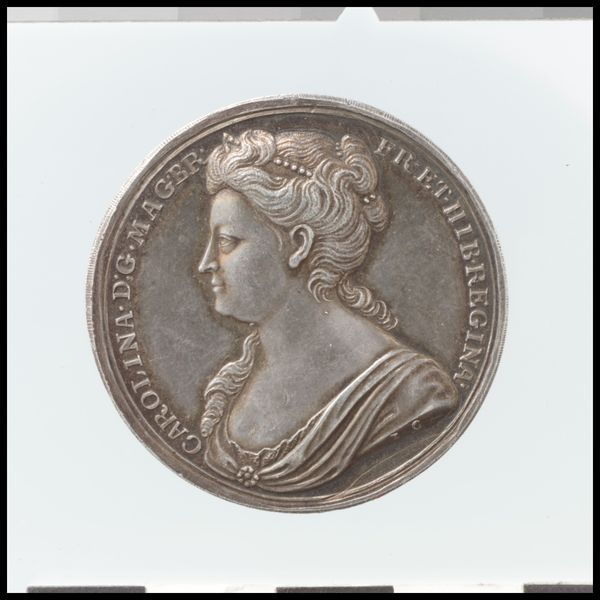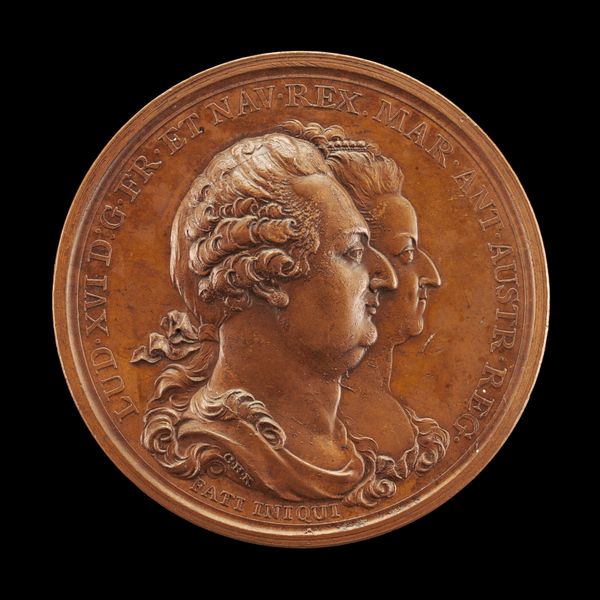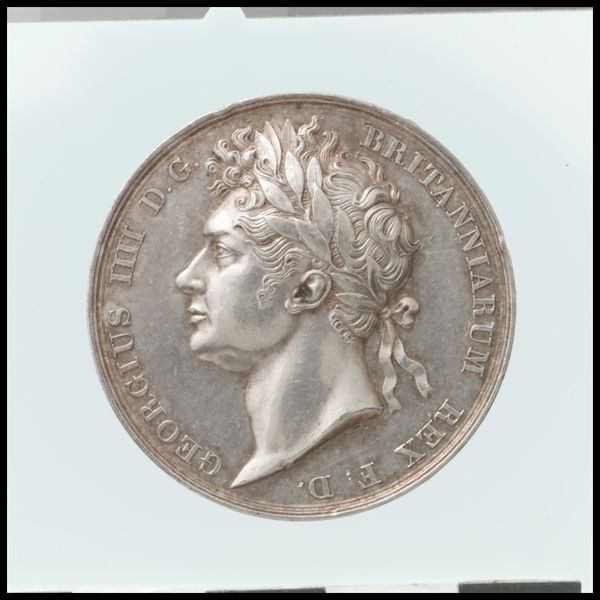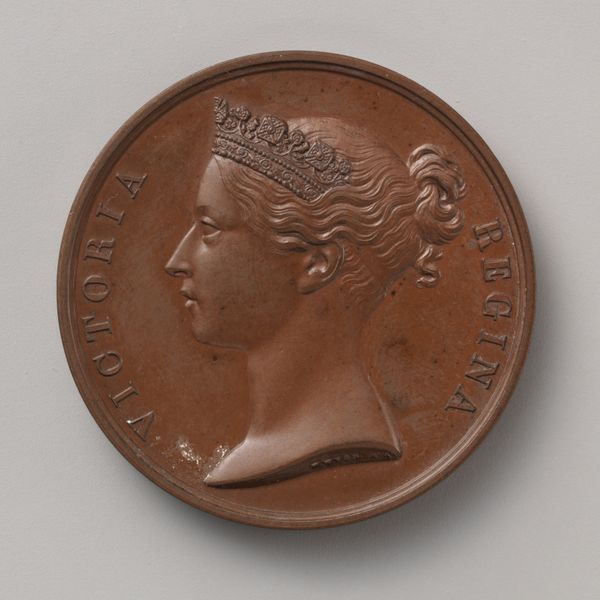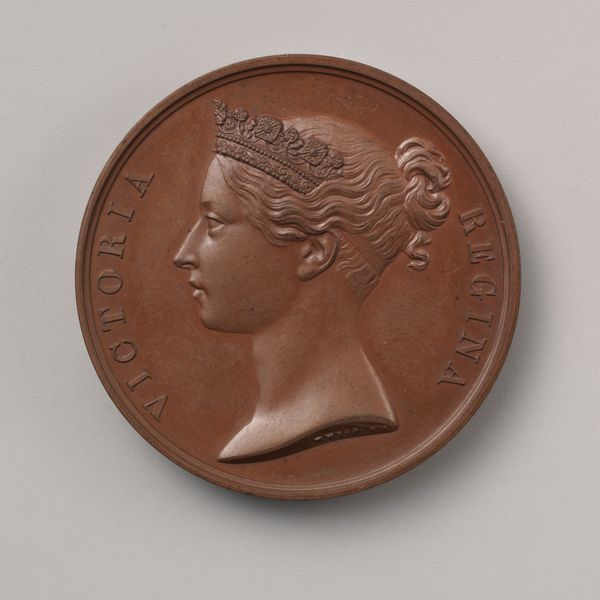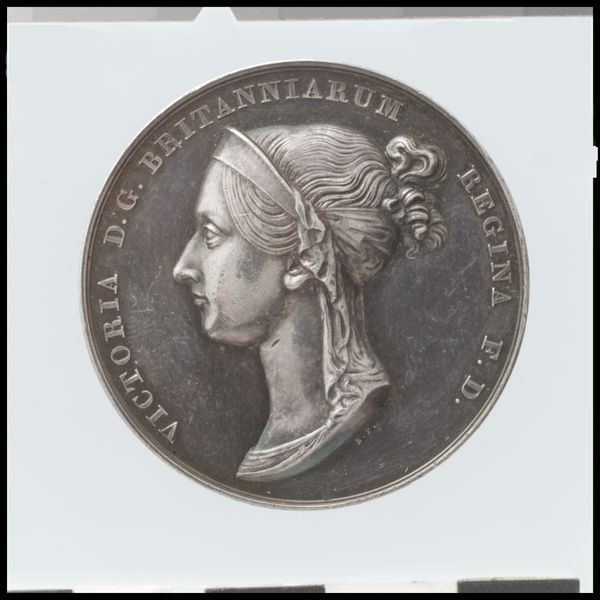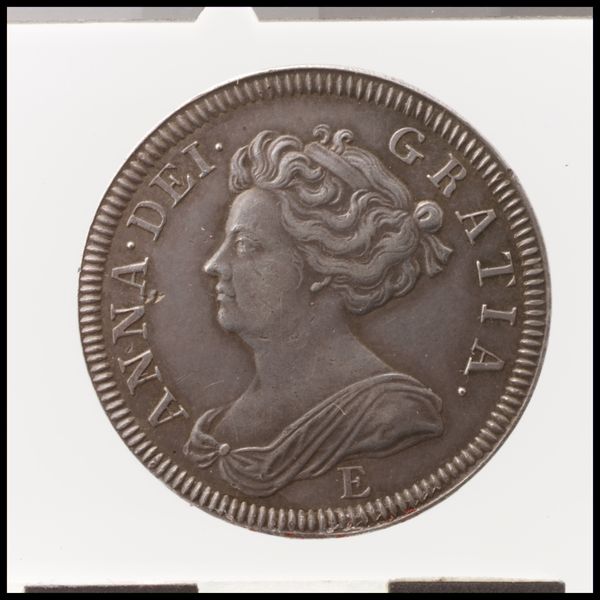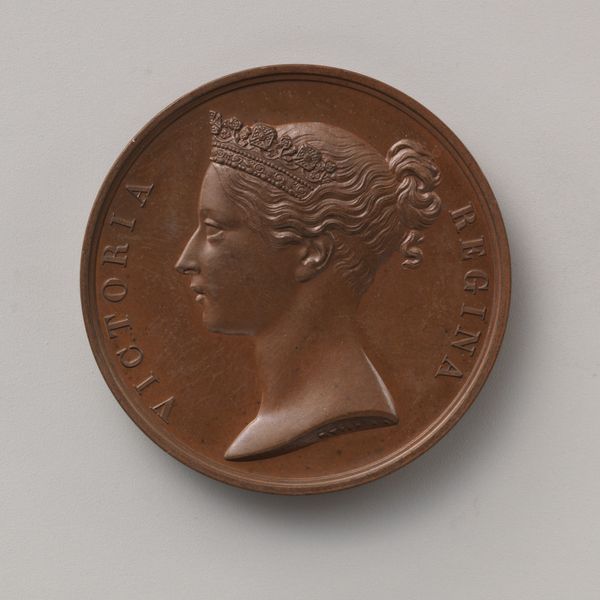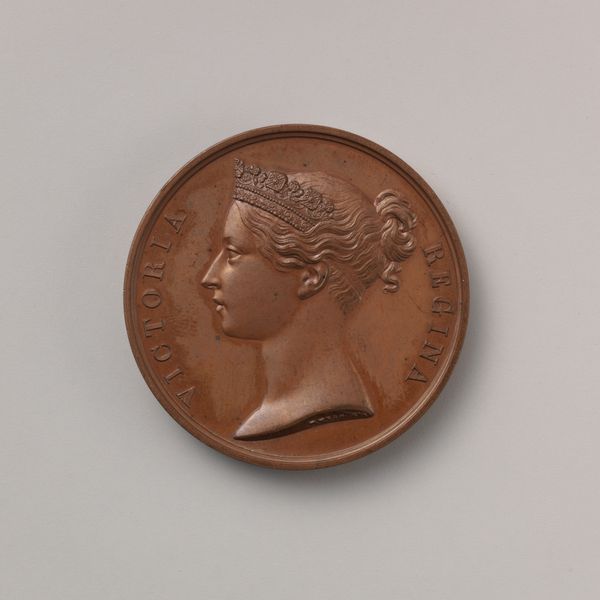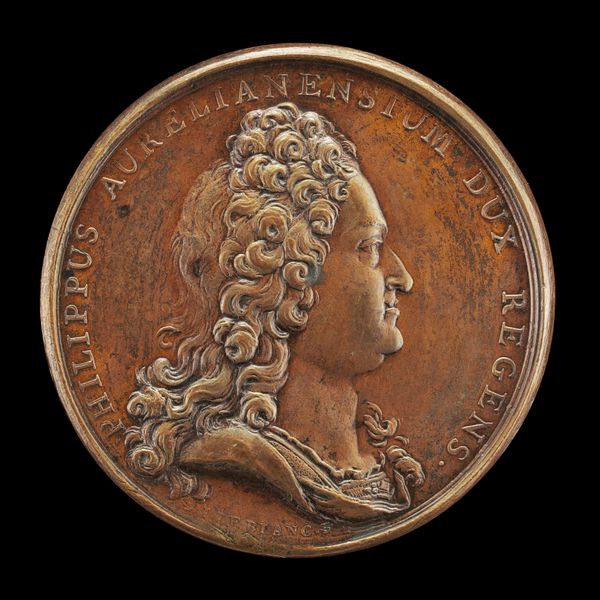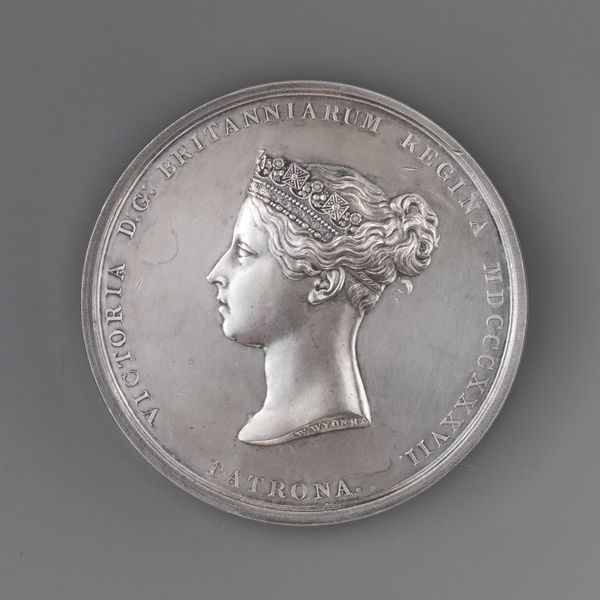
relief, bronze, sculpture
#
portrait
#
medal
#
neoclacissism
#
sculpture
#
relief
#
bronze
#
sculpture
#
decorative-art
#
building
Dimensions: Diameter: 8 5/8 in. (219 mm)
Copyright: Public Domain
Curator: Here we have William Wyon's bronze relief, "Victoria's Visit to the Corporation of London," dating back to 1837, presently housed at the Metropolitan Museum of Art. Editor: My first impression is one of contained power. It's a small object, but that profile view, those meticulously crafted curls beneath the tiara, speak volumes. There's a rigidity there, a carefully constructed image. Curator: Exactly. This medal was created to commemorate a specific event and is very much about crafting that image you mention. Victoria's visit to London was politically charged, intended to solidify her power as a new, young queen. Editor: So it's a piece of political messaging, solidified in bronze. The choice of bronze itself is interesting; it lends the work an air of historical weight, like a classical sculpture. What’s compelling is the implicit message of power, how that regal representation perpetuates class. Curator: Indeed. Wyon was a celebrated die-engraver for the Royal Mint, skilled in translating power into accessible imagery. The neoclassical style recalls earlier eras of imperial rule, subtly connecting Victoria to a legacy of strong leaders, strengthening public belief. Editor: It is also important to recognize how that constructed persona actively negates her personhood. What nuances might we glean from it if we approach her not merely as the ruler of an empire, but instead ask what impact her placement had on the cultural milieu. It demands to recognize the social implications this image creates as much as historical moment its meant to display. Curator: True, we have to be aware of what's present but also the elisions that art creates. Still, to create such a recognizable portrait on such a small scale meant that this image of Victoria was quite rapidly disseminated throughout the United Kingdom, serving its precise purpose to communicate. Editor: Definitely. It's a potent symbol, and examining how symbols like this work is pivotal to decoding our own social environments, because symbols are cultural power. And, recognizing the cultural narratives behind Victoria's constructed imagery is essential in order to begin challenging narratives that privilege few. Curator: So, although a relatively small artwork, its role in solidifying the image, power, and authority of the young Queen Victoria speaks to the far reaching effects that art has as propaganda and political statement. Editor: Leaving us with powerful insights, but importantly, inviting us to consider who are images benefit—both now, as well as then.
Comments
No comments
Be the first to comment and join the conversation on the ultimate creative platform.

